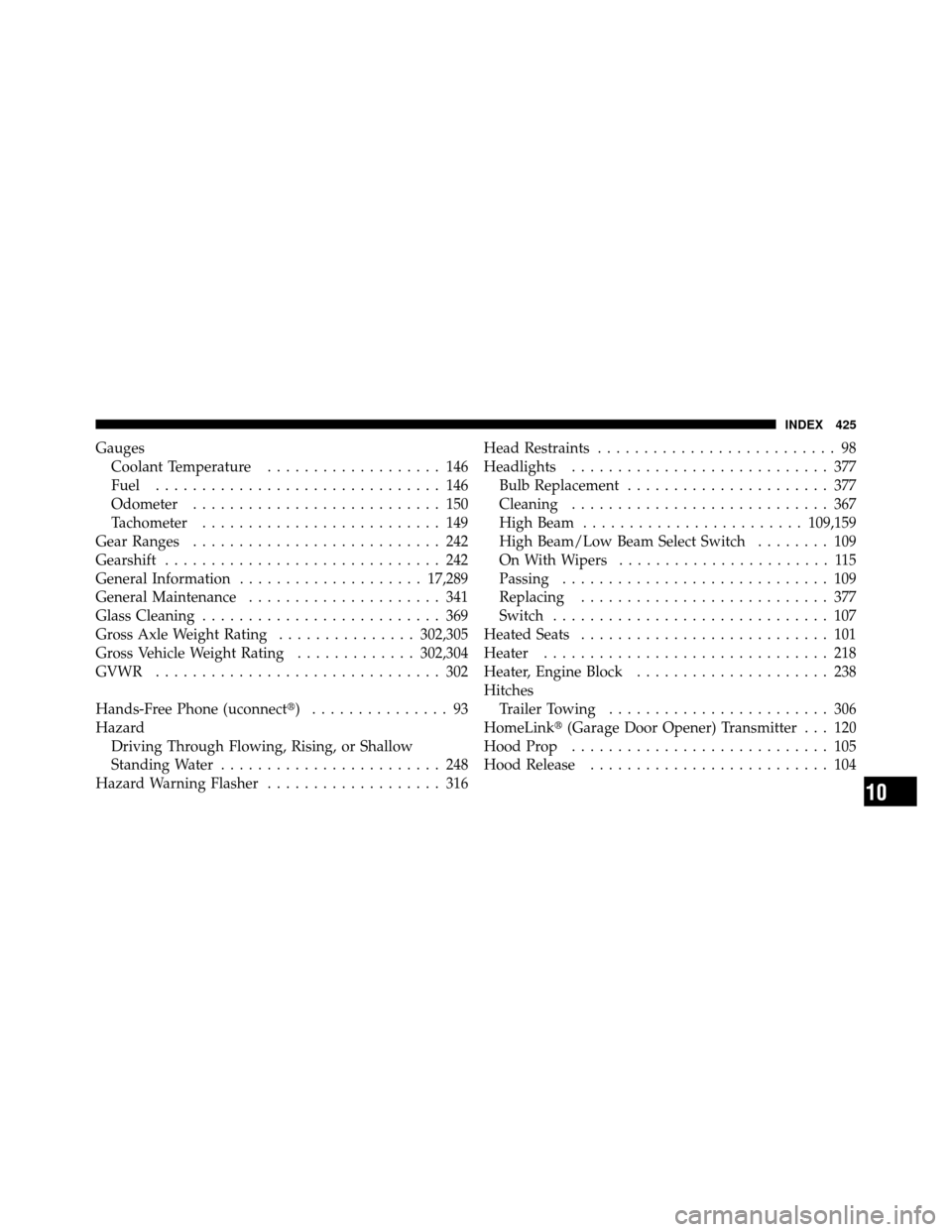Page 27 of 436

How to Use Remote Start
All of the following conditions must be met before the
engine will remote start:
•Shift lever in PARK
•Doors closed
•Hood closed
•Trunk closed
•Hazard switch off
•Brake switch inactive (brake pedal not pressed)
•Ignition key removed from ignition switch
•Battery at an acceptable charge level, and
•RKE PANIC button not pressed
WARNING!
•Do not start or run an engine in a closed garage or
confined area. Exhaust gas contains Carbon Mon-
oxide (CO) which is odorless and colorless. Car-
bon monoxide is poisonous and can cause serious
injury or death when inhaled.
•Keep Remote Keyless Entry (RKE) transmitters
away from children. Operation of the Remote Start
System, windows, door locks or other controls
could cause serious injury or death.
To Enter Remote Start Mode
Press and release the REMOTE START button
on the RKE transmitter twice, within five sec-
onds. The parking lights will flash and the horn
will chirp twice (if programmed). Then, the
engine will start and the vehicle will remain in the
Remote Start mode for a 15-minute cycle.
2
THINGS TO KNOW BEFORE STARTING YOUR VEHICLE 27
Page 104 of 436
Folding Rear Seat Center Armrest
The rear seat is equipped with a folding armrest with
cupholders.
TO OPEN AND CLOSE THE HOOD
To open the hood, two latches must be released.
1. Pull the hood release lever located under the left side
of the instrument panel.
Folding Rear Seat Armrest
Hood Release Lever
104 UNDERSTANDING THE FEATURES OF YOUR VEHICLE
Page 238 of 436

With Tip Start
If the engine fails to start after you have followed the
“Normal Starting” or “Extreme Cold Weather” proce-
dures, it may be flooded. To clear any excess fuel, push
the accelerator pedal all the way to the floor and hold it.
Then, turn the ignition switch to the START position and
release it as soon as the starter engages. The starter motor
will disengage automatically in 10 seconds. Once this
occurs, release the accelerator pedal, turn the ignition
switch to the LOCK position, wait 10 to 15 seconds, then
repeat the “Normal Starting” procedure.
CAUTION!
To prevent damage to the starter, wait 10 to 15 sec-
onds before trying again.
After Starting
The idle speed will automatically decrease as the engine
warms up.
ENGINE BLOCK HEATER — IF EQUIPPED
The engine block heater warms the engine, and permits
quicker starts in cold weather. Connect the cord to a
standard 110-115 Volt AC electrical outlet with a
grounded, three-wire extension cord.
The engine block heater cord is routed under the hood on
the passenger side of the vehicle near the right head lamp
assembly. It is located between the front grille and the
radiator, but underneath the black upper seal.
WARNING!
Remember to disconnect the cord before driving.
Damage to the 110-115 Volt electrical cord could cause
electrocution.
238 STARTING AND OPERATING
Page 351 of 436

quiet, easy operation and to protect against rust and
wear. Prior to the application of any lubricant, the parts
concerned should be wiped clean to remove dust and
grit; after lubricating excess oil and grease should be
removed. Particular attention should also be given to
hood latching components to ensure proper function.
When performing other underhood services, the hood
latch, release mechanism and safety catch should be
cleaned and lubricated.
The external lock cylinders should be lubricated twice a
year, preferably in the Fall and Spring. Apply a small
amount of a high quality lubricant, such as MOPAR�
Lock Cylinder Lubricant or equivalent directly into the
lock cylinder.
Windshield Wiper Blades
Clean the rubber edges of the wiper blades and the
windshield periodically with a sponge or soft cloth and a mild non-abrasive cleaner or use the washer solvent. This
will remove accumulations of salt, waxes, or road film
and help reduce streaking and smearing.
Operation of the wipers on dry glass for long periods
may cause deterioration of the wiper blades. Always use
washer fluid when using the wipers to remove salt or dirt
from a dry windshield.
Avoid using the wiper blades to remove frost or ice from
the windshield. Make sure that they are not frozen to the
glass before turning them on to avoid damaging the
blade.
Keep the blade rubber out of contact with petroleum
products such as engine oil, gasoline, etc.
NOTE:
Life expectancy of wiper blades varies depend-
ing on geographical area and frequency of use. Poor
performance of blades may be present with chattering,
marks, water lines or wet spots. If any condition is
7
MAINTAINING YOUR VEHICLE 351
Page 425 of 436

GaugesCoolant Temperature ................... 146
Fuel ............................... 146
Odometer ........................... 150
Tachometer .......................... 149
Gear Ranges ........................... 242
Gearshift .............................. 242
General Information .................... 17,289
General Maintenance ..................... 341
Glass Cleaning .......................... 369
Gross Axle Weight Rating ...............302,305
Gross Vehicle Weight Rating .............302,304
GVWR ............................... 302
Hands-Free Phone (uconnect�) ............... 93
Hazard Driving Through Flowing, Rising, or Shallow
Standing Water ........................ 248
Hazard Warning Flasher ................... 316 Head Restraints
.......................... 98
Headlights ............................ 377
Bulb Replacement ...................... 377
Cleaning ............................ 367
High Beam ........................ 109,159
High Beam/Low Beam Select Switch ........ 109
On With Wipers ....................... 115
Passing ............................. 109
Replacing ........................... 377
Switch .............................. 107
Heated Seats ........................... 101
Heater ............................... 218
Heater, Engine Block ..................... 238
Hitches Trailer Towing ........................ 306
HomeLink� (Garage Door Opener) Transmitter . . . 120
Hood Prop ............................ 105
Hood Release .......................... 104
10
INDEX 425